This weekend I had the opportunity to take a group of people out to explore the Forest Floodplain area along the Boquet River in Whallensburg, NY. This was a hike sponsored by the Northeast Wilderness Trust who, with the help of Eddy Foundation, are working to preserve this ecologically important area located off the sharp turn on Cook Road East of Back Kettle Farm.
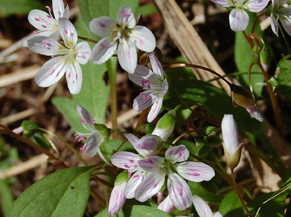
We were a mixed-aged group (the youngest was a baby in a sling) with different backgrounds, but all wide-eyed in anticipation and ready to explore. We started by walking down an old road, which was little more than a logging road now covered in moss and ferns and very wet in some places. It was bordered on the left by a mixed forest of maples, beech, hemlock, white pine, hornbeam (musclewood), hophornbeam (ironwood), witch hazel, paper and yellow birch (among others). On the right, it topped the rise above the Boquet River floodplain. Thanks to the sharp eyes and short stature of one 8-year old, we spotted bloodroot, partridgeberry, trout lily, wild ginger, spring beauties, and lots and lots of red trillium dotting the forest floor.
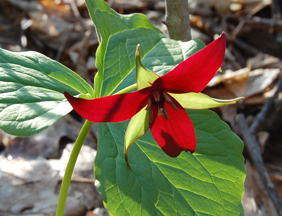
At the end of the “road” we reached a wetter area, heavily used by beavers with many pointed stumps all around. A small stream meandered though the area, bordered by cattails, and through the trees we could see the bright green of an agricultural field marking the northern most boundary of the preserved area. At our feet, sharp-lobed hepatica, herb Robert, and sensitive ferns were poking through the leaf litter. We followed the edge of the water as it swung back around to the south again and came around the corner to an expansive beaver pond with two houses rising out of the water. There was also a lot of invasive moneywort around the pond unfortunately, but it didn’t detract from the real beauty of the area.
We started back south then, exploring between the beaver swamp on the left and the steep slope to the upland forest above on the right. There were lots of wild leeks (ramps), squirrel corn, wild oats, hepatica, bloodroot, trout lily, blue cohash, toothwort, ferns and moss covered logs.
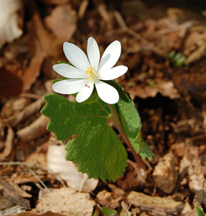

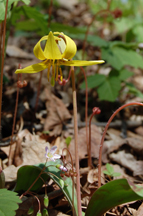
There was also a collection of black maple, something very rare in this area. Here the photographers went to work shooting the myriad wildflowers on their hand and knees as the rest of us explored.


Finally we reached the banks of the Boquet River and followed it down past blooming wild cherry trees, several potholes full of frogs and a sandy riverbank covered in animal tracks (deer, raccoon, coyote). Climbing up away from the water, we came over a rise to a lowland back swamp and all stopped to stare. The whole swamp was covered in new, bright green, false hellebore. It was stunning.
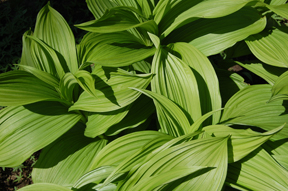
As we covered the last quarter-mile back to our starting point, we stumbled across an old stone water cistern hidden in the hemlocks and covered with soft, green moss. It was strange to think that there have been people living here for more than 200 years and their signs are just under the leaf litter if you look for them. Amid the rapidly disappearing wild forests of the world, I suppose it is our hope that there will be people walking in these same woods in another 200 years looking at the signs and wondering about us. It’s a goal worth pursuing.
(Thanks to Laura Dikovsky Smith and Kathy Kelly for taking pictures!)

